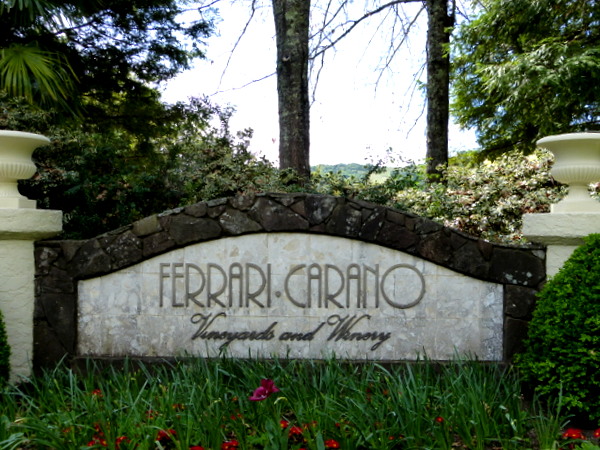
CALIFORNIA Sonoma County. Spring is a delightful time of year to follow the winding road that edges Dry Creek Valley. Hills are green; mustard adds brilliance to quilted vineyards on the verge of leafing out. The highlight of the drive, however, lies at the valley’s northern end: the gardens of Ferrari-Carano Vineyards and Winery.
While the gardens are a treat to visit in any season, tulips are springtime’s showoffs. Spectacular beds of tulips, nodding in concert with hundreds of trumpeting daffodils, result from the planting of 10,000 bulbs each year.
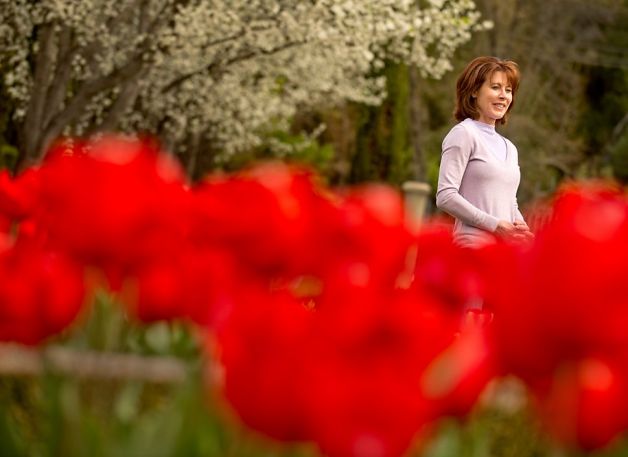
Rhonda Carano enjoys the tulip display. (Photo: Alvin Jornada)
In 1997, when Rhonda Carano and her husband, Don, founded their Dry Creek winery, Rhonda Carano, a life-long gardener, looked at the parcel of land designated for the winery’s operations and envisioned it as a glorious garden. “A garden as important as the world-class wines we had in mind,” she says.
Carano, a second generation Italian-American and a native of Reno, grew up tending gardens and cooking with her grandmother. “In traditional Italian families, such as ours, it’s unthinkable not to maintain a garden,” she says.
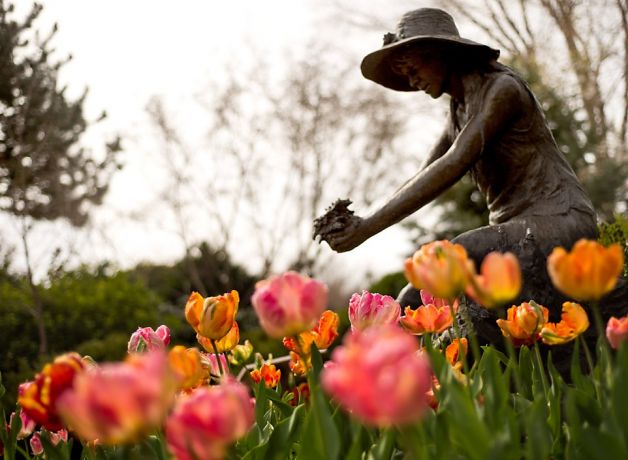
(Photo Alvin Jornada)
While Ferrari-Carano’s 5-acre Dry Creek garden doesn’t include fruits and vegetables destined for the kitchen — Carano tends to that in the couple’s Reno and Sonoma County home gardens — it nevertheless celebrates the diversity and bounty that comes from the earth, expressed here in what amounts to a botanical garden of trees, shrubs and flowers.
“From the beginning, I had a strong idea of what this garden should be,” Carano says, “and worked closely with the architect designing the winery building to fulfill my vision.” Today she describes the plantings that encompass the estate’s entrance, the visitor parking area and the winery as “California park-like,” a relaxed and casual introduction to the garden areas to come.
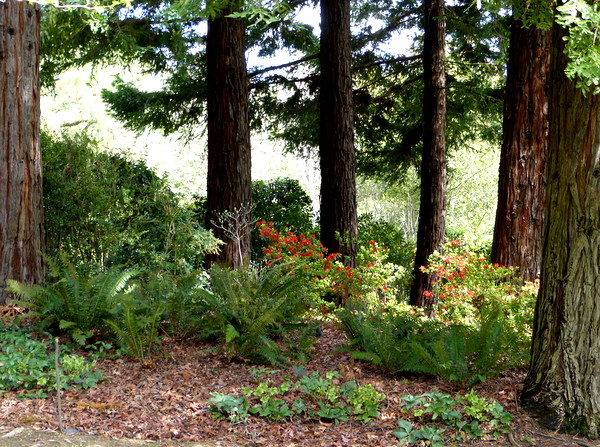
(Photo Yvonne Michie Horn)
Once the vineyards and winery were in full production, construction began on the estate’s hospitality center, Villa Fiore (House of Flowers). In keeping with the building’s classic Mediterranean architecture, Carano envisioned Italian/French parterre gardens, in which geometric shapes outlined by paths and hedges dictate planting areas.
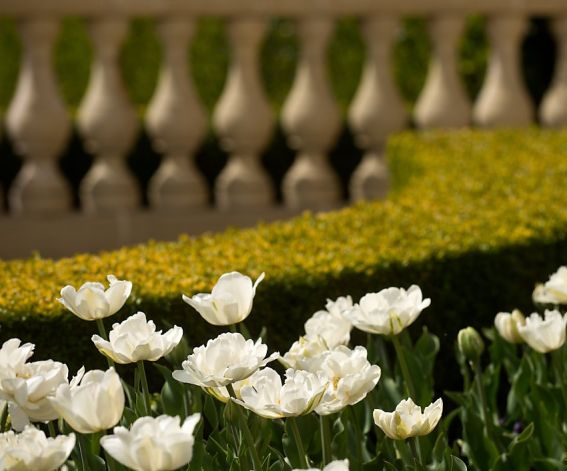
(Photo Alvin Jornada)
A third area, located off the main walkway leading to Villa Fiore, is entered through a wrought-iron gate. Visitors wander through “rooms,” that invite lingering. Bridges cross a tumbling stream; waterfalls at both end flow into fish-filled ponds. Throughout the estate, trees and shrubs are marked with identification tags, more than 2,000 species in all, including two Portuguese cork trees, a rarity for the area.
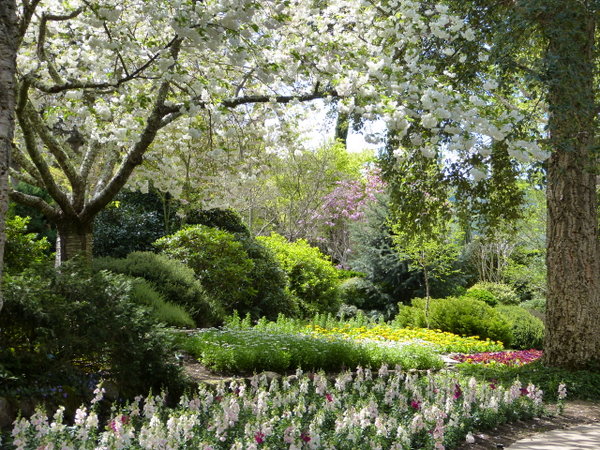
(Photo Yvonne Michie Horn)
Head gardener, Pat Patin with a background in landscape architecture, has worked hand in hand with Carano “since day one.” Today the garden is tended by Patin, his assistant and five workers. Carano is actively involved in the seasonal selection of plant material, the choice of annuals and their color palette. Twenty-five thousand annuals are planted each year. “It’s an all-season garden,” she says. “It must always appear fresh.”
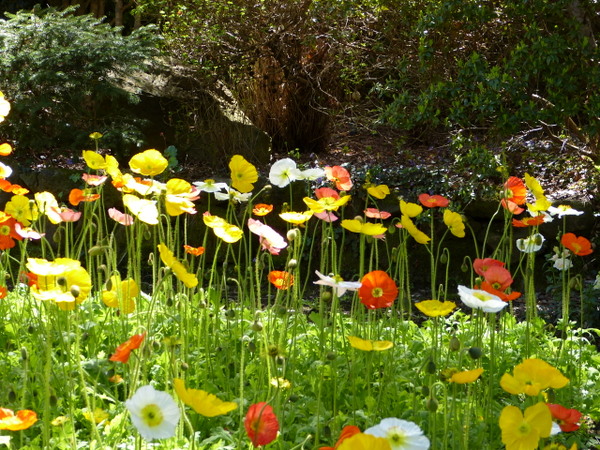
(Photo Yvonne Michie Horn)
She is also the one who comes up with what she calls “the yearly garden surprise.” For 2012, “F” and “C” was spelled out in red and white fibrous begonias on the slope leading to the Villa. The year before, visitors were greeted by the garden’s strolling, resident rooster.
“Many visitors return spring, summer, fall and winter, year in and year out,” Carano says. “The garden can never remain static. There must always be something new to see no matter how often or when one walks the garden.”
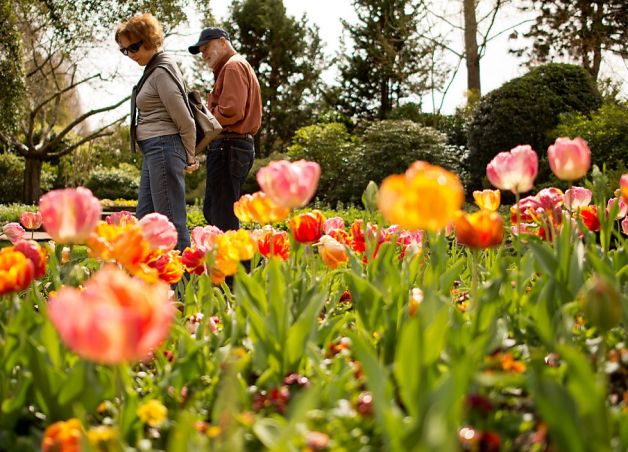
(Photo Alvin Jornada)
Sasanqqua camellias brighten the January garden. Rhododendrons and azaleas soon follow, leading up to the spectacular springtime display of bulbs, flowering shrubs and trees, colorful beds of pansies and violas. Late spring into early fall features roses, heritage and hybrid.
For Patin, winter is one of his favorite seasons in the garden, for it is then that its structure can most readily be seen in the variety of evergreens that provide the garden’s backbone and the bare branches of deciduous trees reveal the artistry of their growth habits.
Spring’s tulip display, however, brings the most excitement, with visitors streaming through the estate’s entry gate. Color blocks and hues are thought out months in advance. Repeating “tulip peepers” can count on viewing a brand new tulip-extravaganza each year.
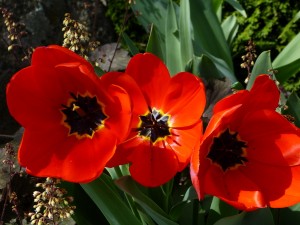
(Photo Yvonne Michie Horn)
And what will next spring’s tulip palette be? For that, you’ll have to drive the winding road edging Dry Creek Valley to come and see. For a heads up as to the tulip shows opening date, which comes at the whim of Mother Nature, Ferrari-Carano maintains a Tulip Hotline: (707) 433-5349.
